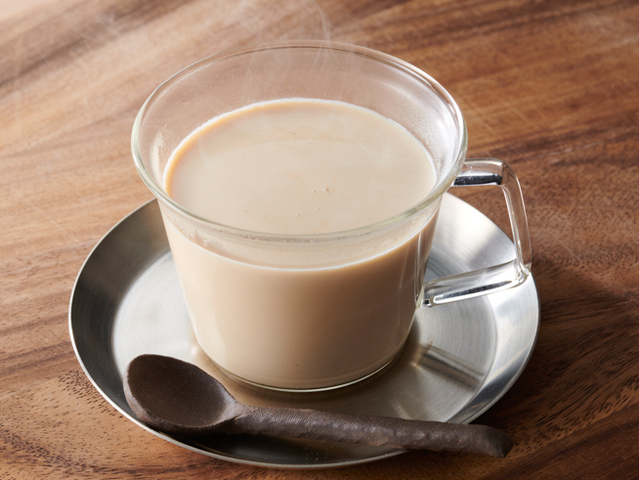
Kaga Boucha

IshikawaKaga Boucha
Classification (Large)
Others
Classification (Small)
Beverages
Main ingredients used
tea leaves
When using downloaded images, please read the "Terms of Use" and clearly state that the source of the image is "Traditional Foods in Japan" by the Ministry of Agriculture, Forestry and Fisheries.
If the photo credits is stated, please include it as well.
Example of description
of the photo credits
Example of description when the photo credits is not stated
Source: "Traditional Foods in Japan" Ministry of Agriculture, Forestry and Fisheries
Example of description when the photo credits is stated
Source: "Traditional Foods in Japan" Ministry of Agriculture, Forestry and Fisheries
Photo credits:xxx
Region of inheritance
Prefecture-wide
Product overview (special characteristics and types)
Kaga Bocha is made by roasting the best-quality stems from tea trees to create tea with a fragrant taste and natural sweetness. The aroma of Kaga Bocha contains various components, and as it contains more roasted aroma components (pyrazines) and flower aroma components (geraniol, linalool) than standard hojicha, it has an especially fragrant aroma. Furthermore, there are three degrees of roasting—light, medium, and dark. Light roasting leaves much of the umami components and creates tea that strongly maintains its original flavors, and the darker the tea is roasted, the stronger the roasted aroma and sweetness becomes.
History and culture
During the Edo period, after the third Kaga lord, Maeda Toshitsune, retired to Komatsu Castle, he supported the development of tea ceremony culture by inviting the founder of the Urasenke School, Senso Soshitsu. After he encouraged the planting of tea trees in the Kaga domain to promote the industry, production took off, and by the Meiji period, Ishikawa Prefecture had become one of the major production areas for tea leaves. By the end of the Edo period, tea exports were booming, and by the Meiji period, 80% of tea produced in Japan was being exported overseas. As a result, tea from Kaga became a luxury product for commoners. In 1902, a tea merchant from Kanazawa named Shinbei Hayashiya developed an effective method to use the stems, which were a byproduct made during the drying process of the tea leaves to enable a long shelf life. When the roasted Kaga Bocha hit the market, it became immensely popular due to its characteristic fragrance, taste, and affordable price. Following this, the production method was disclosed, establishing its position as a widespread tea within the prefecture. Furthermore, in 1983, Kaga Bocha was offered to the Showa Emperor.
Production method
The tea is created in the order of tea-leaf picking, steaming, rubbing/drying, sorting, and roasting. First, the picked tea leaves are steamed with their stems. Next, they are rubbed thoroughly to make the tea components dissolve more easily in water, before drying into crude tea for a long shelf life. After this, the stems to make Kaga Bocha are sorted. During this process, the tough leaves, wooden stems, and powder found within the crude tea are removed to refine the final flavor. Roasting is the last step. There are three methods of roasting: direct roasting by a heated, rotating iron drum traps the tea’s flavor within using the heat conducted from the surface of the stems for a rich flavored tea. Sand roasting submerges the tea into heated sand to roast, just like how baked sweet potatoes are made with radiation heat. This creates a savory and fragrant tea. Far-infrared ray roasting uses far-infrared rays emitted from heated ceramic to heat the insides of the stems in a short amount of time, and is a relatively new roasting method perfect for light roasting.
Conservation and succession efforts
Dozens of companies within the prefecture have their own way of roasting Kaga Bocha, and continue to elevate each other’s flavors.
Main consumption method
When brewing in a Japanese teapot, put two tablespoons of Kaga Bocha into the teapot, pour about 300 cc of piping hot water, and wait about 25 seconds before serving. To create a cold brew, place four tablespoons of Kaga Bocha in one liter of water in a glass pot, and refrigerate for about three hours. When brewing in a kettle, heat a kettle with approximately two liters of water and add two tablespoons of Kaga Bocha when the water boils. Turn off the heat and keep the lid on to prevent the fragrance from escaping. Let sit for more than 20 minutes and allow to cool slightly.
At-home recipes:Kaga Bocha tea brewed in milk

Ingredients
Kaga Bocha
3 tablespoons
Milk
200ml
How to make
Put Kaga Bocha and milk in a pot and heat them over medium heat. When the milk starts to simmer, turn off the heat, and strain it through a tea strainer.
Pour the tea into a cup. Add sugar or another sweetener if desired.

